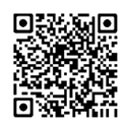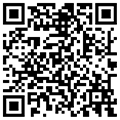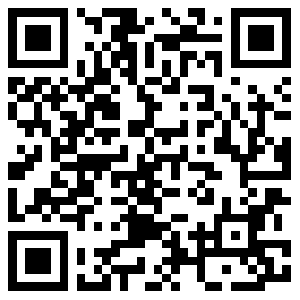羟氯喹眼毒性的中心周围性视网膜病变和种族差异
2018年12月24日 8361人阅读 返回文章列表
羟氯喹眼毒性的中心周围性视网膜病变和种族差异
贾俊峰
空军军医大学西京医院临床免疫科贾俊峰
Top: Fundus photography of the right eye was normal after 4 years of hydroxychloroquine therapy (1993, left) but showed pericentral degeneration after 13 years of treatment (2002, right)
上图:羟氯喹治疗4年后的右眼眼底摄影是正常(1993年,左),但经过13年的治疗显示旁中心性变性(2002年,右)
图1. 用超广角自发荧光比较正常眼底和羟氯喹视网膜病变的模式:
正常(A),旁中心凹性(B),混合性(C),以及中心周围性(D)。
目的:
描述羟氯喹视网膜病变的模式不同于经典的旁中心凹(牛眼)黄斑病变。
设计:
病例回顾性研究。
对象:
患者来自大型综合医疗中心和一个较小的大学转诊治疗所,确诊为羟氯喹视网膜病变。除外病变广泛或“终末期”视网膜病变患者。
方法:
复习眼科检查(眼底照相,谱域光学相干断层扫描,眼底自发荧光,多灶性电图,视野)和视网膜病变的3种分类的图案:旁中心凹性(视网膜改变从中心凹2°-6°),中心周围性(视网膜改变从中心凹≥8°),或混合性(在旁中心凹和中心周围区域眼底改变)。
主要观察指标:
不同的羟氯喹视网膜病变模式的相对频率和危险因素比较。
结果:
在201位(18%为亚洲人)有羟氯喹视网膜病变的患者中,153位(76%)有典型的旁中心凹性改变,24位(12%)也有一个区域的中心周围性损伤,24位(12%)有中心周围视网膜病变而没有任何旁中心凹性损坏。中心周围性视网膜病变独见于50%的亚裔患者,但在白人患者只有2%。中心周围性病变的患者比在旁中心凹性病变的患者服用羟氯喹稍微略长(19.5vs15.0年,P<0.01< span="">),累积剂量较大(2186vs1813克,P = 0.02),但在为毒性更严重的阶段才被诊断。
结论:
羟氯喹视网膜病变并不总是以旁中心凹(牛眼)模式出现,中心周围模式在亚洲患者中尤为多见。可能需要对筛查方法进行调整,以识别中心周围和旁中心凹羟氯喹视网膜病变。
读后:虽然低剂量长期使用羟氯喹的眼毒性很小,但是其对眼睛的毒性是不可逆的,而且尚无针对性药物。对于筛查来说,视野检查最为敏感,OCT(光学相干断层扫描)检查最为特异。羟氯喹对于多种风湿病来说是重要的基础用药,随着其更广泛的使用,加强风湿科、眼科医生的协作及对患者的教育,对于及时发现羟氯喹眼毒性,保护视力具有重要意义。
文献来源:
Ophthalmology. 2015 Jan;122(1):110-6.
Pericentral retinopathy and racial differences in hydroxychloroquine toxicity.
Melles RB, Marmor MF.
PURPOSE:
To describe patterns of hydroxychloroquine retinopathy distinct from the classic parafoveal (bull's eye) maculopathy.
DESIGN:
Retrospective case series.
PARTICIPANTS:
Patients from a large multi-provider group practice and a smaller university referral practice diagnosed with hydroxychloroquine retinopathy. Patients with widespread or "end-stage" retinopathy were excluded.
METHODS:
Review of ophthalmic studies (fundus photography, spectral-domain optical coherence tomography, fundus autofluorescence, multifocal electroretinography, visual fields) and classification of retinopathy into 1 of 3 patterns: parafoveal (retinal changes 2°-6° from the fovea), pericentral (retinal changes ≥ 8° from the fovea), or mixed (retinal changes in both parafoveal and pericentral areas).
MAIN OUTCOME MEASURES:
Relative frequency of different patterns of hydroxychloroquine retinopathy and comparison of risk factors.
RESULTS:
Of 201 total patients (18% Asian) with hydroxychloroquine retinopathy, 153 (76%) had typical parafoveal changes, 24 (12%) also had a zone of pericentral damage, and 24 (12%) had pericentral retinopathy without any parafoveal damage. Pericentral retinopathy alone was seen in 50% of Asian patients but only in 2% of white patients. Patients with the pericentral pattern were taking hydroxychloroquine for a somewhat longer duration (19.5 vs. 15.0 years, P < 0.01) and took a larger cumulative dose (2186 vs. 1813 g, P = 0.02) than patients with the parafoveal pattern, but they were diagnosed at a more severe stage of toxicity.
CONCLUSIONS:
Hydroxychloroquine retinopathy does not always develop in a parafoveal (bull's eye) pattern, and a pericentral pattern of damage is especially prevalent among Asian patients. Screening practices may need to be adjusted to recognize pericentral and parafoveal hydroxychloroquine retinopathy.

 浙公网安备
33010902000463号
浙公网安备
33010902000463号



